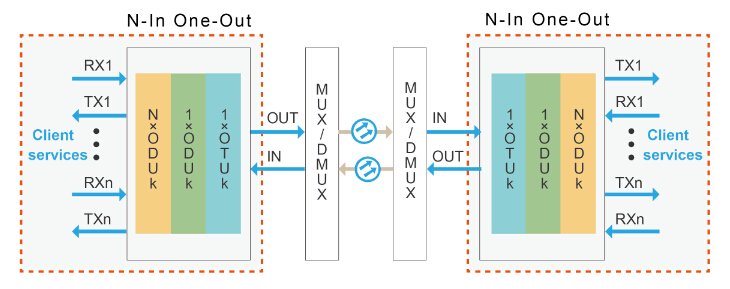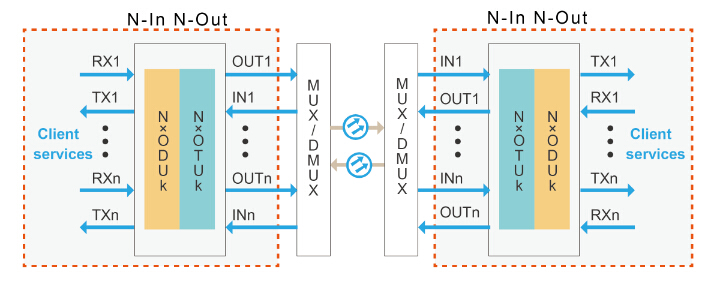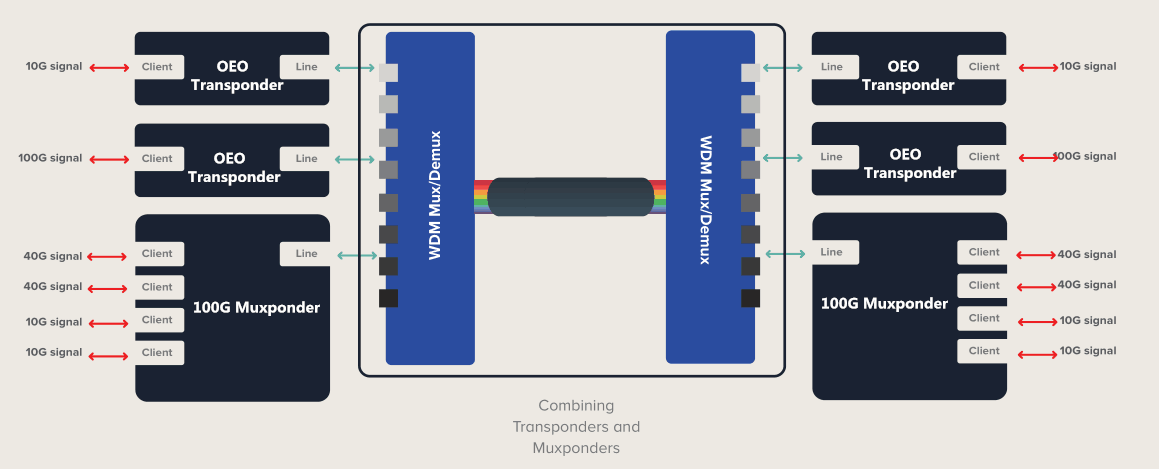100G technology is evolving dramatically, and it soon becomes a necessity for carriers and enterprises to handle the escalating data traffic and bandwidth consumption. As a fraction of WDM technology, 100G muxponder emerges as a perfect alternative to enable full utilization of existing fiber, maximizing the network capacity and performance for now and future. So what is new about muxponder? Is there any difference between it and OEO transponder? The article intends to shed light on these questions.
Muxponder works to aggregate multiple services into a single wavelength, this wavelength, along with other wavelengths, are then multiplexed into the same fiber. Therefore, instead of assigning each service a dedicated wavelength, it enables several different service to share the same wavelength. In this case, muxponder maximizes the fiber utilization and offers low-cost, easy to operate solutions for enterprises and carriers. The rates and protocols it supports range from 40G LAN, 10G LAN/WAN, STM64/OC-192, and 8G/10G Fiber Channel.

Muxponder accommodates two 40G QSFP+, ten 10G SFP+ client interfaces and a 100G CFP line interface, supporting pluggable short range, DWDM metro and long range coherent 100G optics. It receives several data signals at its client ports, then it utilizes the OEO conversion to convert the client input signals on to an aggregated WDM signal. Muxponder allows for a random combination of 10G and 40G client interface to get 100G rate. You can make the choice according to your network condition.
- 10 x 10G client services into 100G DWDM uplink
- 2 x 40G LAN + 2 x 8/10G client services into 100G DWDM uplink
- 1 x 40G LAN + 6 x 8/10G client services into 100G DWDM uplink

Transponder receives a data signal (usually an optical signal) at the client port, converts it to an electrical data stream which it then processes and regenerates. Then it converts the signal back to an optical WDM signal which is presented on the line port. This conversion process is commonly referred to as OEO (optical to electrical to optical) conversion.

When establishing a WDM-based system, transponder and muxponder can be used in combination. Or using an embedded WDM signal on the same system. Notice that the amount of line signal should be less than or equal to the number of ports on the WDM multiplexer. Sometimes, transponders and muxponders present to be a preferred choice over embedded WDM transceiver, since some switch vendors don’t offer WDM transceivers or carrier needs to provide a client signal to its users.

FS muxponder is designed as a plug-in card type. This 100G multiprotocol multirate muxponder serves as a part of our FMT transport system, occupies two slots of the system. There are other plug-in cards in FMT, including VOA, DCM, EDFA, etc. With this compact plug-in design, our 100G transponder saves much rack space, as well as the operational costs. More importantly, it simplifies the process of installation and maintenance.
100G muxponder, which supports flexible multi-service aggregation, allows coexistence with legacy 10G and 40G wavelengths, and provides superior optical performance while minimizing space costs, is proven to be effective to convert short-range optical signal into long-haul WDM signals.